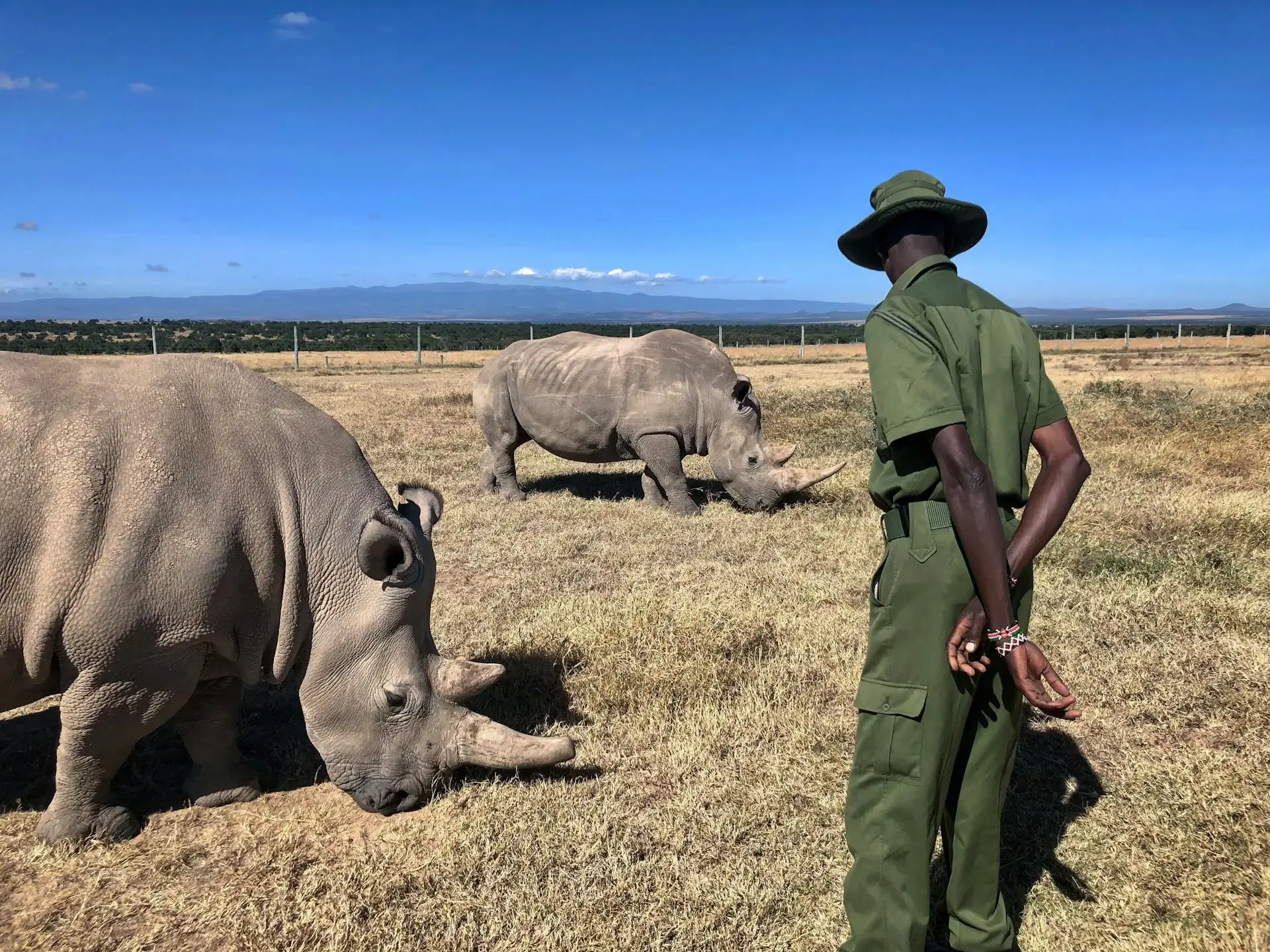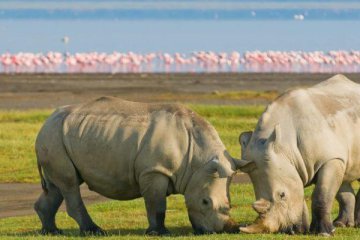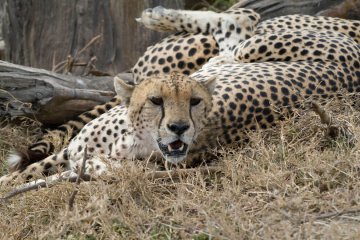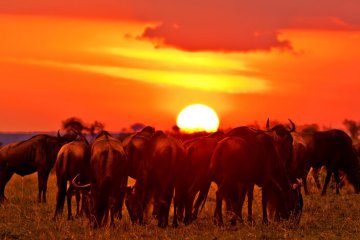Ol Pejeta Conservancy is the largest Black Rhino Sanctuary in East Africa, home to the last 2 Northern White Rhinos in the World and the only Chimpanzee Sanctuary in Kenya.
Ol Pejeta Conservancy is a 90,000-acre wildlife conservancy situated between the foothills of Mount Kenya and the Aberdares and its game-to-area ratio tops the Kenyan park and reserve league. Ol Pejeta Conservancy has over 10000 large mammals. It boasts an astounding variety of animals including the non-indigenous chimpanzees and the Big 5 (the endangered black rhino, leopard, elephant, buffalo and lion).
Since being established in 1988 Ol Pejeta has had a colourful list of previous owners including Lord Delamere, an early and influential settler from Britain, shipping tycoon Aristotle Onassis’ father Roussel and the arms dealer Adnan Khashoggi. It was set up originally as a cattle ranch but herds of migrating elephant regularly destroyed the fenced enclosures making intensive cattle farming impracticable. Cattle still plays a role in Ol Pejeta today but as a managed livestock within the conservancy and is used to maximise the bio-diversity of the land making Ol Pejeta an integrated wildlife and livestock area.
WILDLIFE
Ol Pejeta Conservancy is Africa’s most iconic species hunt, graze, breed and fight for survival on the plains of Ol Pejeta every day, in an ecosystem that has the highest densities of wildlife in Kenya outside of the Maasai Mara. Using the latest technology to monitor species populations, and smart fencing techniques that allow free movement of migratory wildlife, Ol Pejeta prides itself on being at the cutting edge of conservation innovation. Ol Pejeta Conservancy is the largest Black Rhino Sanctuary in East Africa, and the only place in Kenya to see chimpanzees, Ol Pejeta is also safeguarding some of the most vulnerable wildlife in the world, and advocating for change.
RHINOS
Ol Pejeta is home to two of the world’s last remaining Northern White Rhinos, and a Sanctuary for over 140 critically endangered Black Rhinos. The Conservancy employs highly trained Rhino protection squads. It partners with international veterinary experts and ensures data is gathered regularly on each individual animal. Steps like these ensure it remains a role model for Rhino conservation in East Africa.
Ol Pejeta conservancy has 39 southern whites. The first animals were introduced into Ol Pejeta in 2005.
There is actually no colour difference between white and black rhino. The name is said to have been a mistranslation of the Afrikaans word ‘weit’ meaning ‘wide’ – which refers to their square shaped lips used for grazing. This is the main distinction between white rhino and black, which have a hooked lip for browsing.
The southern white rhino is said to have the most complex social structure of all rhino subspecies (a group of rhinos is called a crash) and prefer open grass plains making them easier to spot on safari.
CHIMPANZEES
Chimpanzee Sanctuary at Ol Pejeta is a charming haven established by the Jane Goodall Institute to provide sanctuary to orphaned chimps, and the specially protected and fenced refuge of black rhino with its stunning forty specimens!
OL PEJETA CONSERVANCY SAFARIS
Participants are also introduced to the communities around the conservancy and their livelihoods. Ol Pejeta’s immersive experiences, engagement and approach are significant because they spotlight the need for conservation, animal welfare and community empowerment.
Safari by vehicle is not the only option at Ol Pejeta. Game walks, Horse rides and even Camel Rides are available, as are nocturnal game drives.
Ol Pejeta’s immersive conservation program is a great opportunity to engage in the day-to-day running of wildlife conservancy. You will have chance to learn about caring for endangered animals, how conservation agriculture works, the procedures of wildlife research and monitoring, and what it takes.
The conservancy is keen to educate as well and has an Environmental and Conservation Centre that welcomes around 100 Kenyan schools through its doors annually. The Centre focuses on teaching ecology, culture and the importance of sustainable wildlife management to safeguard the future of the conservancy. Visitors can also learn about local culture and traditions by meeting the peoples of the Samburu, Turkana, Pokot and Maasai.
Baraka is now an ambassador for his species – and a popular attraction at Ol Pejeta. There is a feeding platform from which visitors can get up close to view and feed him, an experience not to be missed. Baraka receives visitors daily from 9.30am to 6.00pm, with feeding times three times per day.
The cost of the visit to Baraka and the Information Center is already included within the Conservancy Fee.
The Sanctuary provides a permanent refuge in as natural environment as possible – the 40 or so chimpanzees are protected on an island and access to see them is by boat.
There is also a converted rhino transportation crate to explore!
The Morani Centre is open from 9a.m to 5a.m every day and is free of charge.




